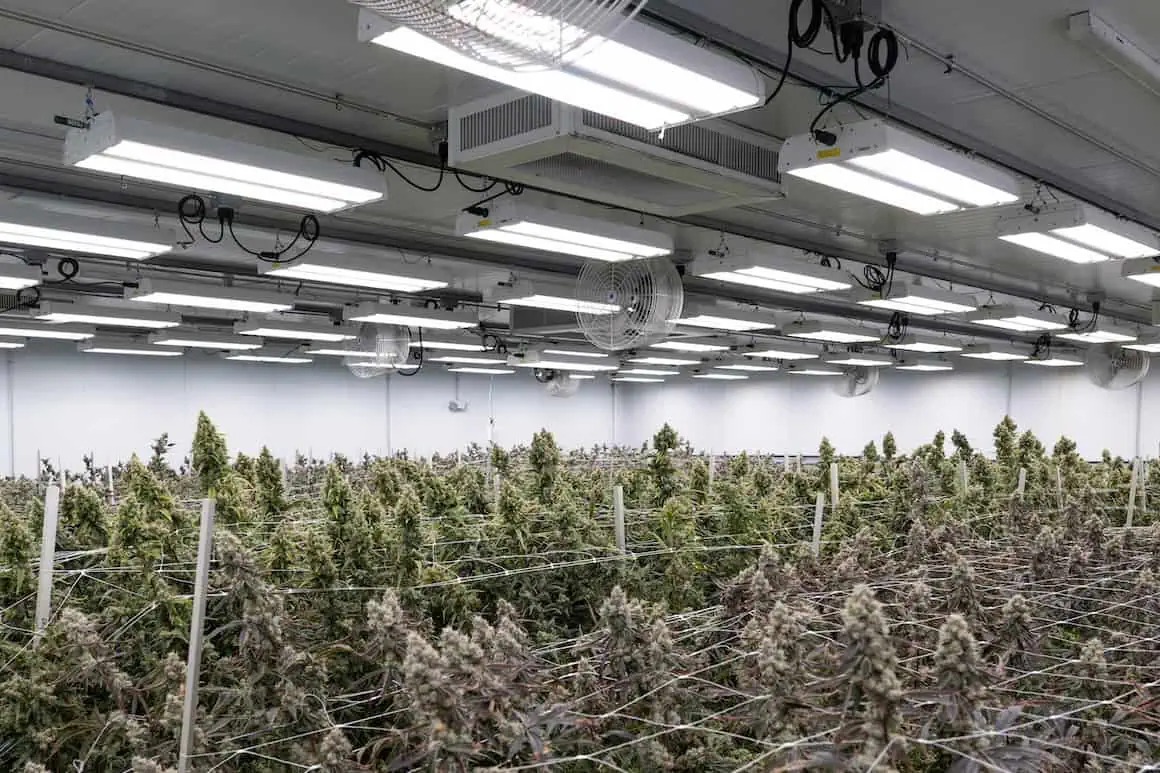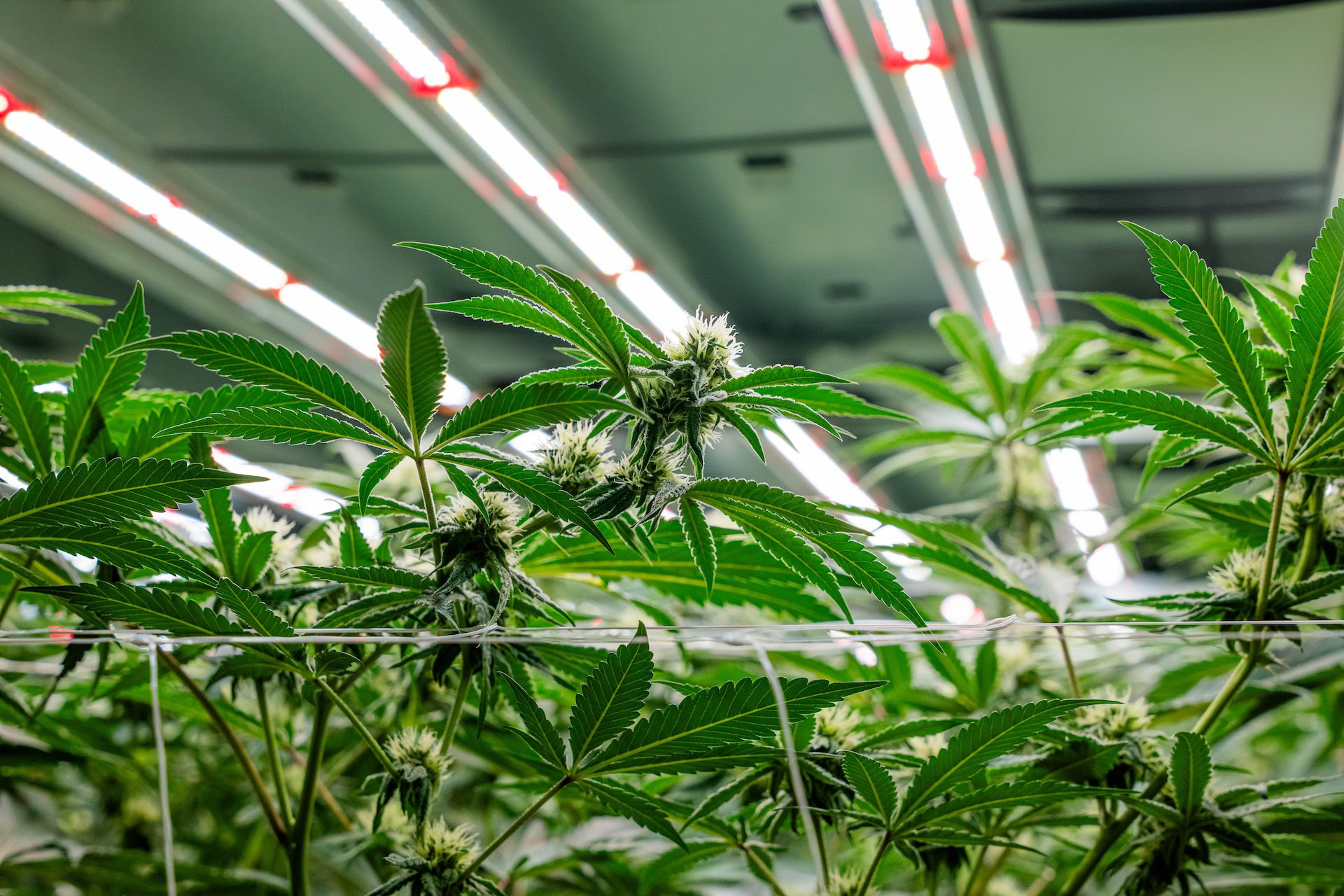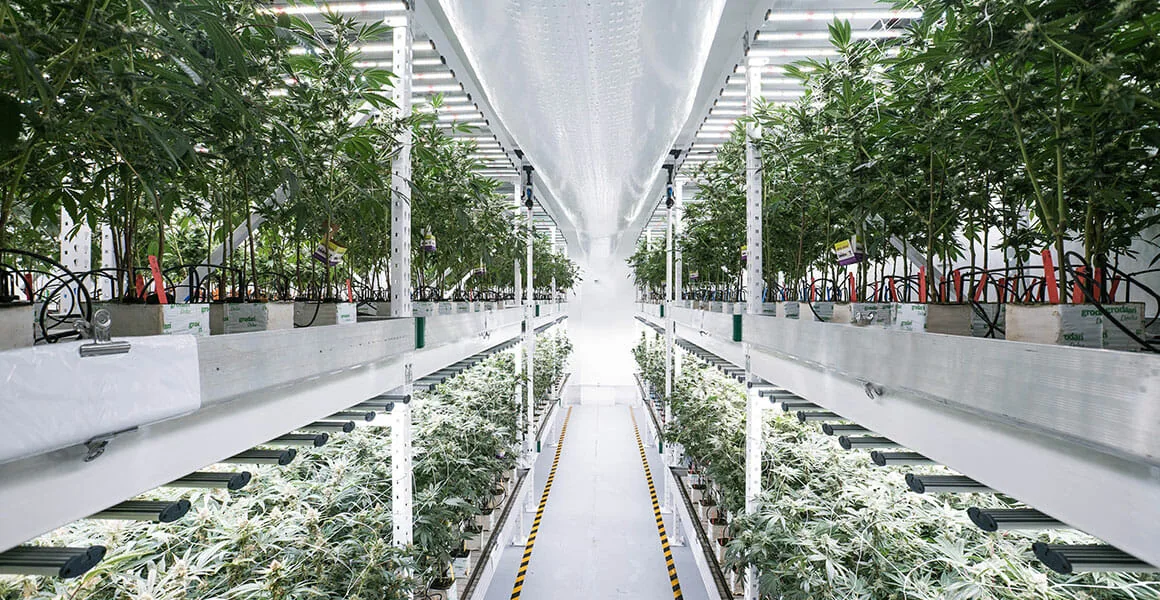Broad-Spectrum Lighting Returns Higher Cannabis Yields
- Posted on
- by Fluence Bioengineering
Table of Contents
This article originally appeared in Cannabis Business Times.
In a study conducted in partnership with Texas Original Compassionate Cultivation, Fluence scientists discovered the benefits of broad-spectrum white lights and the limitations of high red spectra.At Texas Original Compassionate Cultivation (TOCC), a vertically integrated medical cannabis producer in Austin, research goes hand-in-hand with production. Exhaustive research on lighting equipment, in partnership with Fluence by OSRAM, an LED lighting fixture manufacturer also located in Austin, has allowed the cultivation company to gain a deeper understanding of how light quality and intensity affect crop outcomes.
“Before, we never really had lighting options. You just [grew with] HPS [high-pressure sodium] or metal halide, and you just grew with whatever spectrum that bulb came with,” explains Jason Sanders, the cultivation manager for TOCC. “Well, the beauty of LEDs is we now have full control over the light quality and the intensities, really allowing us to maximize plant performance.”
TOCC has conducted studies on light spectrum, “everything from broad white to high red and everything in between,” Sanders says, as well as on light intensity. In the most recent study conducted at the facility, researchers examined the impact of the amount of red light hitting the canopy.
The findings? Using a whiter light (meaning a light with a broader spectrum) throughout all phases of growth correlates to larger dry weight flower yields than LEDs with a higher red light content (typically referenced as pink light).
The study required each of TOCC’s three flowering rooms to be broken into four zones, each representing a different spectral treatment. The light treatments differed with varying fractions of red light. The R4 zone was set at 40% red light (meaning it had the broadest/whitest spectrum), the R6 zone at 60%, and the R8 zone at 80% red light. The treatments were deployed in a randomized complete block design across the three rooms to ensure statistical validity to the study.Additionally, each zone had a variety of type 1 (THC-rich), type 2 (THC:CBD balanced) and type 3 (CBD-rich) cannabis cultivars, to identify cultivar-dependent spectral responses. Light intensity was normalized across spectral treatments applying high photosynthetic photon flux density (PPFD) at the top of the canopy.
The results of this study showed that the R4 treatment with the broadest white spectrum yielded the greatest floral bud dry mass, with TOCC seeing an average 17% increase in dry weight of type 1 flower compared to the control plants. For type 3 plants, the average increase was 11%, Sanders details.
Growers might see these results and determine that a broad white LED will yield the optimal results, but Dr. David Hawley, Ph.D., a senior scientist with Fluence, notes that there are other considerations to spectrum, including operating costs.
“Red diodes inherently are cheaper to run,” Hawley says. “They have really good electrical efficacy, converting electrical energy to photosynthetic output. When you can get more light out of a fixture for less money input, that’s good. We always want to look at that balance: What’s the best light from a pure plant performance perspective versus what light is the most economical for the grower? Because, at the end of the day, we understand the growers are going to be most concerned about their bottom line.”
That said, “with cannabis being such a high-value crop, the final quality has a major impact on the bottom line. Our research shows a broad-spectrum light so vastly outperforms the kind of plants that you get under a more red light, that … the energy savings between a broad white light and a pink light is so minor when calculating the value of the final product. The increase in revenue with the higher quality product quickly offsets the slightly higher operational costs,” Hawley says.
Sanders adds that in addition to looking at biomass yield, the study also looked at how the different amounts of red light affected secondary metabolite levels, but no significant differences were noticed amongst the different spectra.


